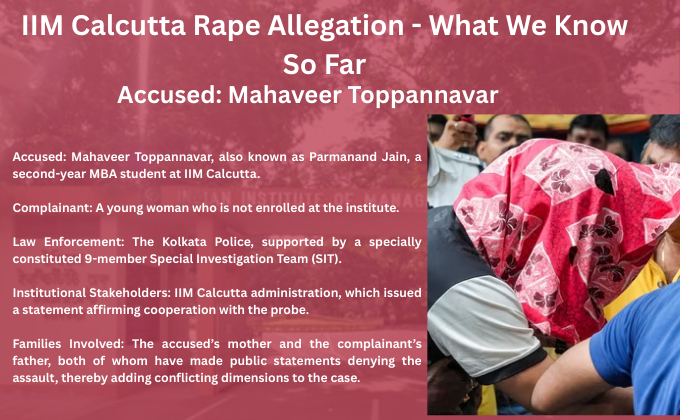Joka
From under-construction metro pillars to rising apartments and student hotspots, Joka is no longer just Kolkata’s edge — it’s a growing city of its own. Catch the transformation stories, civic updates, and daily voices on RagaDecode.

IIM Calcutta Rape Allegation - What We Know So Far
Ragavendran Ramesh • News Articles • Published on 13 Jul 2025A rape allegation at IIM Calcutta involving an MBA student has triggered a police investigation, institutional scrutiny, and conflicting public statements. This article explores the full timeline, key individuals, evidence, and implications for campus safety at one of India’s premier institutes.
Joka, once a quiet suburb known mostly for its connection to IIM Calcutta, has rapidly transformed into one of Kolkata’s most sought-after residential and institutional corridors, where metro construction dust mixes with dreams of connectivity, urban comfort, and opportunity. Located on the southern fringe of the city and expanding along Diamond Harbour Road, Joka’s headlines increasingly focus on real estate launches, metro rail delays, civic infrastructure bottlenecks, and the influx of students and working professionals who now call this growing locality home. The long-anticipated Joka–Taratala Metro line has already sparked waves of development, property investments, and daily commute reshaping, even as residents routinely complain about slow progress beyond Thakurpukur and patchy feeder services in interior stretches. Local news often highlights traffic congestion at Joka crossing, unauthorized encroachments near tram depots, open drains during monsoons, and the shortage of reliable public buses during peak hours. With the presence of IIM Calcutta, the area also carries an academic aura, attracting coaching institutes, hostels, cafés, and affordable PG accommodations — all of which fuel local businesses while triggering zoning and noise regulation debates. Politically, Joka has grown more active with every election, witnessing TMC, BJP, and CPI(M) foot soldiers canvassing in newly built housing societies, slums behind construction sites, and local clubs engaged in water supply and ration card grievances. Waterlogging near Silpara, frequent transformer issues, and narrow service roads in areas like Hanspukur and Rasapunja make regular appearances in civic complaints, while residents in newer complexes demand park upgrades, street lights, and police patrolling. Medical care, driven by nursing homes and nearby hospitals like ESI and Bharat Sevashram, is functional but often overstretched during dengue season or power outages. Food joints, garment shops, gyms, and new supermarkets are rising fast, shaping the lifestyle of young tenants, yet also displacing old family-run stores that served this belt for decades. Local festivals, community Durga Pujas, and grassroots cricket tournaments add flavor to its identity, as does the mix of old Bengali para culture and new cosmopolitan pockets. With the Joka Metro gradually extending, builders pushing high-rise dreams, and civic issues oscillating between old rural governance and urban aspirations, RagaDecode tracks Joka’s fast-evolving story — grounding its growth in daily updates, lived experiences, and frontline headlines that reflect a locality quietly becoming a city of its own.
